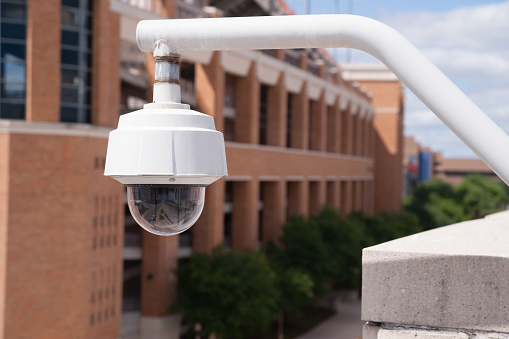 College campuses are not immune to mounting safety and security concerns that stem from international and domestic terror threats, active shooter situations and more. Parents of students want to know that their children are safe when they leave home for the first time.
College campuses are not immune to mounting safety and security concerns that stem from international and domestic terror threats, active shooter situations and more. Parents of students want to know that their children are safe when they leave home for the first time.
The antennas raise even higher for parents when they hear their students plan to spend the next term studying abroad. What some may find surprising is that even in the shadow of heightened terrorism, the interest in study-abroad programs has remained steady. This is likely to continue into 2018 and 2019, due in part to the great lengths most study-abroad programs go to ensure student safety.
Typically, organizations are working directly with representatives affiliated with the local government to formulate the best protocols and develop a safe itinerary for the visit. Furthermore, insurance coverage for students participating in these programs is often mandatory. This means that travelers will receive monetary payouts if something goes wrong, as well as access to services that help lessen the chances of that something going wrong, such as emergency evacuations.
Many colleges and universities are finding success in taking a comprehensive risk-management approach. By working with a travel assistance company, effective protocols for emergency aftermath are put in place. One best practice is ensuring all travelers have the same emergency contact. Should a need arise, all information will flow back to the school in a timely manner and ensure it is able to handle communication to concerned parents. In addition, schools rely on travel-assistance programs for pre-trip education, in-trip communications and even travel tracking.
But this is not only a concern of students traveling the world. Campus safety here in the U.S. continues to be a focal point of higher education insurance programs as well. Today’s larger hot-button issues include:
Active shooters and terrorism. To alleviate common risk factors, have an emergency response plan in place that includes cooperation from campus and local police, the process to identify at risk individuals, political protests, campus firearms policy and a campus notification plan.
Athletic injuries. Traumatic brain injury exposure can be a high-profile issue. To avoid it, invest in injury prevention, athletic training, personal protective equipment and maintenance of the equipment, training facilities and emergency response procedures.
Building access. To avoid break-ins or unauthorized persons on campus, make sure that locks, alarms and entry system-card readers are in place alongside security cameras, campus security professionals and emergency lockdown procedures.
Campus assaults. The prevalence of this reported in the media will continue to rise, and campuses should ensure security is trained to handle all the various exposures to injury, set up security cameras, increase student and employee awareness, coordinate with local police and instill open campus exposure and incident reporting/monitoring.
Minors on campus. There are many risks associated with minors on campus. Put protocol in place to identify them, require reporting of specified events and instill related training of some or all institution employees.
There are a myriad of other concerns for universities to discuss with risk managers, such as cybersecurity, vehicles, drones, fire and lab safety. It is critical that a holistic approach to risk management is taken on today’s college campuses and working with an advisor that has experience specific to the higher education arena should be considered mandatory in today’s environment.
John Cerasani is the managing director of the higher education practice at Risk Strategies Company.
Related Posts:
A Spectrum of Liabilities for Off-Campus Housing
Good “Geofences” Make Good Neighbors in Age of Mobile Alerts
Summer 2004 Journal: Colleges Grappling with Emotionally Troubled Students
[ssba]
